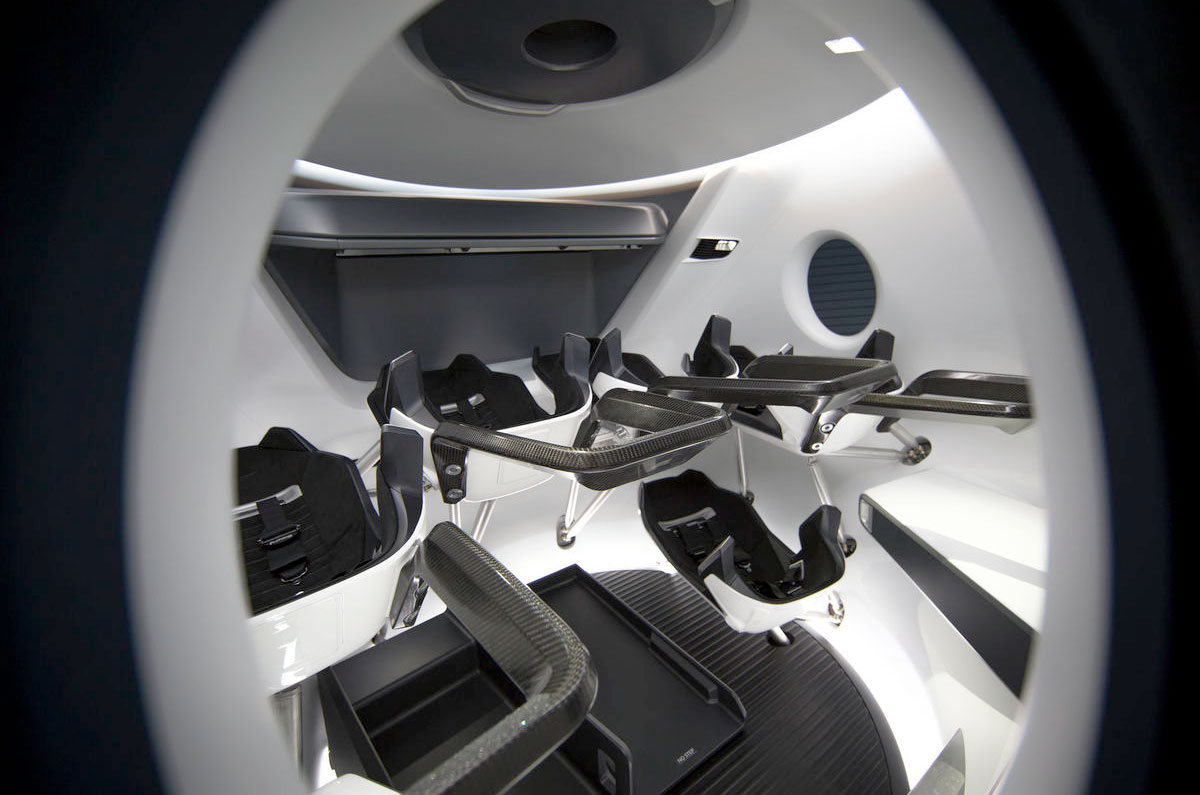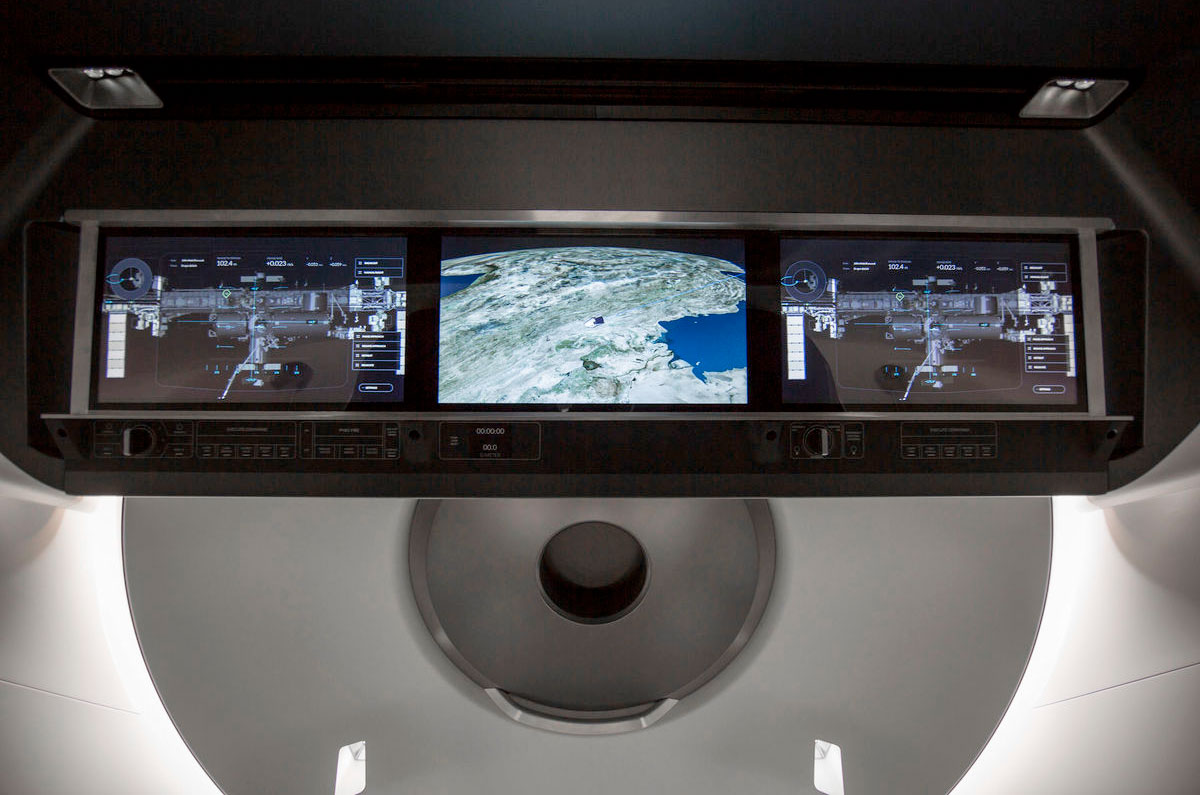Step Inside Crew Dragon: SpaceX Reveals Interior of Crewed Space Capsule
SpaceX has thrown open the hatch to its Crew Dragon spacecraft, revealing a sleek black and white interior for the capsule it is building to fly astronauts to the International Space Station and other destinations.
"Step inside Crew Dragon," SpaceX invited on a new page of its website on Thursday (Sept. 10).
"Dragon made history in 2012 when it became the first commercial [uncrewed] spacecraft to deliver cargo to the space station," SpaceX wrote on its website. "But Dragon was also designed from the beginning to carry people, and today SpaceX is finalizing the necessary refinements to make that a reality." [Take a Video Tour Inside SpaceX's Crew Dragon Spacecraft]
Images and video newly-released by the company show that the tan leather and mirrored metal surfaces previously unveiled as part of Crew Dragon's debut in May 2014 have now been replaced by black bucket seats and stark white walls.

"Crew Dragon was designed to be an enjoyable ride. With four windows, passengers can take in views of Earth, the Moon, and the wider Solar System right from their seats, which are made from the highest-grade carbon fiber and Alcantara cloth," SpaceX described.
The spacecraft's only punch of color — other than from its windows — is from the flat panel displays of the capsule's forward-mounted control panel.
"Crew Dragon's displays will provide real-time information on the state of the spacecraft's capabilities, anything from Dragon's position in space, to possible destinations, to the environment on board," SpaceX stated.
Get the Space.com Newsletter
Breaking space news, the latest updates on rocket launches, skywatching events and more!
The Crew Dragon's environmental control and life support system will "provide a comfortable and safe environment" for its passengers, added the Hawthorne, California-based company. "During their trip, astronauts on board can set the spacecraft's interior temperature to between 65 and 80 degrees Fahrenheit."

The fully autonomous Crew Dragon is one of two privately designed spacecraft NASA has contracted to begin flying its astronauts to the space station beginning in 2017. The other, Boeing's CST-100 Starliner, is also equipped with a primarily black and white cabin, punctuated by the glow of "Boeing Sky Interior" blue LED lighting, as the aerospace company has deployed on its passenger jetliners.
SpaceX, which earlier this year tested the Crew Dragon's emergency escape system, is planning another abort test in 2017, preceded by a test flight without astronauts to the space station. The company's first Crew Dragon to fly with NASA astronauts aboard will follow the in-flight abort test, prior to SpaceX starting to fly operational missions to the orbiting outpost in the next two to three years.
Step into SpaceX's Crew Dragon: watch a video tour inside the capsule at collectSPACE.
Follow collectSPACE.com on Facebook and on Twitter at @collectSPACE. Copyright 2014 collectSPACE.com. All rights reserved.
Join our Space Forums to keep talking space on the latest missions, night sky and more! And if you have a news tip, correction or comment, let us know at: community@space.com.

Robert Pearlman is a space historian, journalist and the founder and editor of collectSPACE.com, a daily news publication and community devoted to space history with a particular focus on how and where space exploration intersects with pop culture. Pearlman is also a contributing writer for Space.com and co-author of "Space Stations: The Art, Science, and Reality of Working in Space” published by Smithsonian Books in 2018.In 2009, he was inducted into the U.S. Space Camp Hall of Fame in Huntsville, Alabama. In 2021, he was honored by the American Astronautical Society with the Ordway Award for Sustained Excellence in Spaceflight History. In 2023, the National Space Club Florida Committee recognized Pearlman with the Kolcum News and Communications Award for excellence in telling the space story along the Space Coast and throughout the world.










